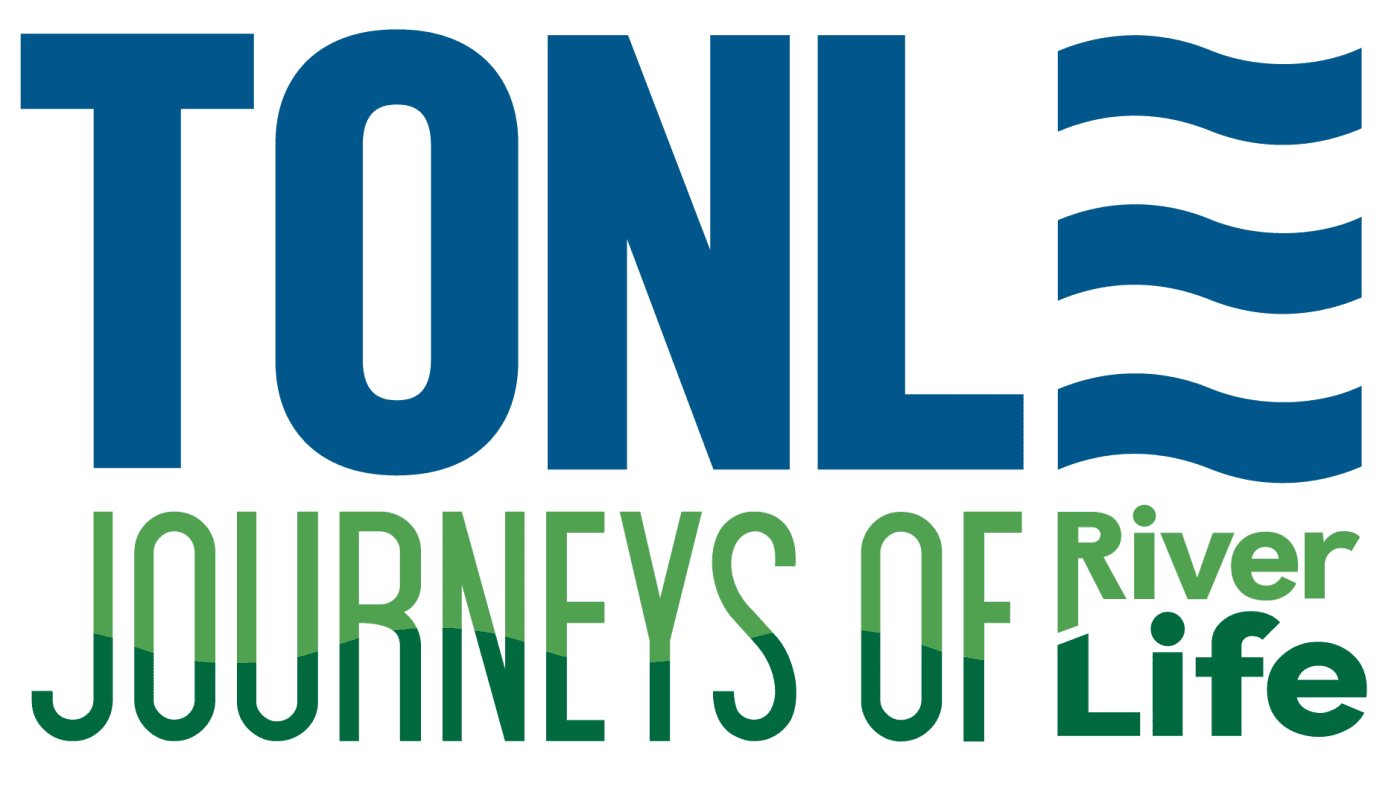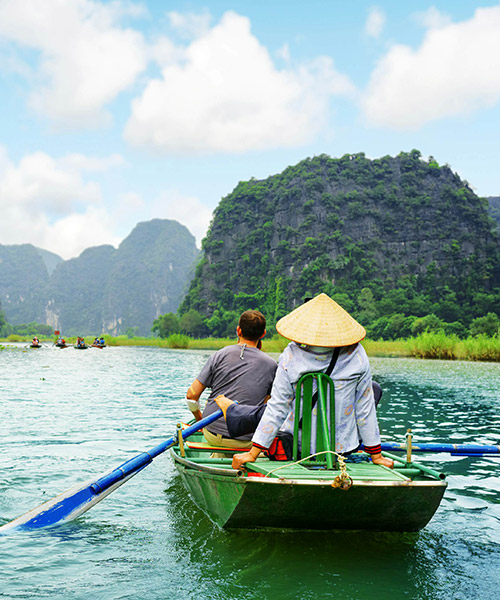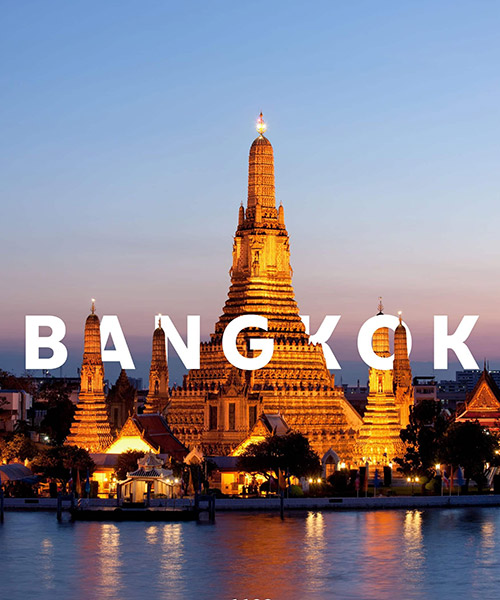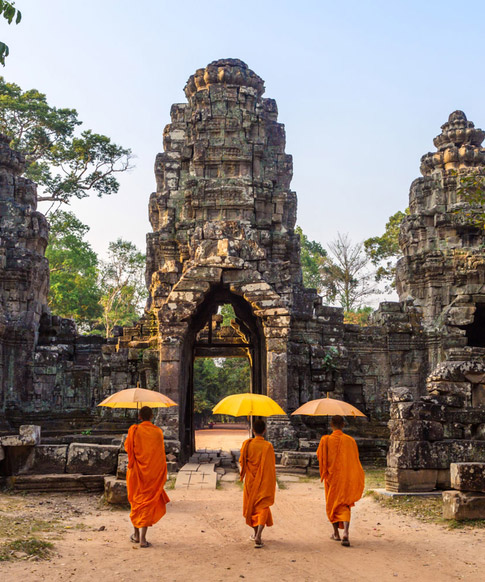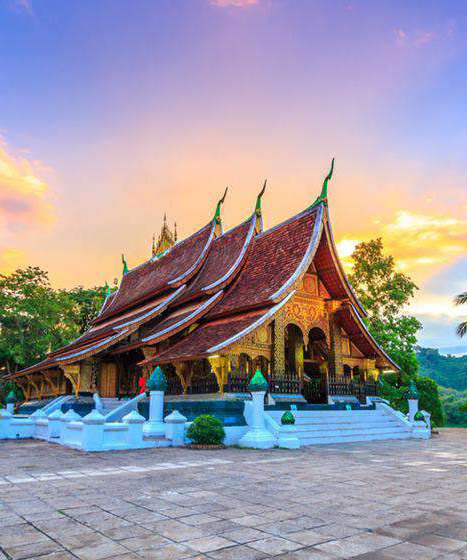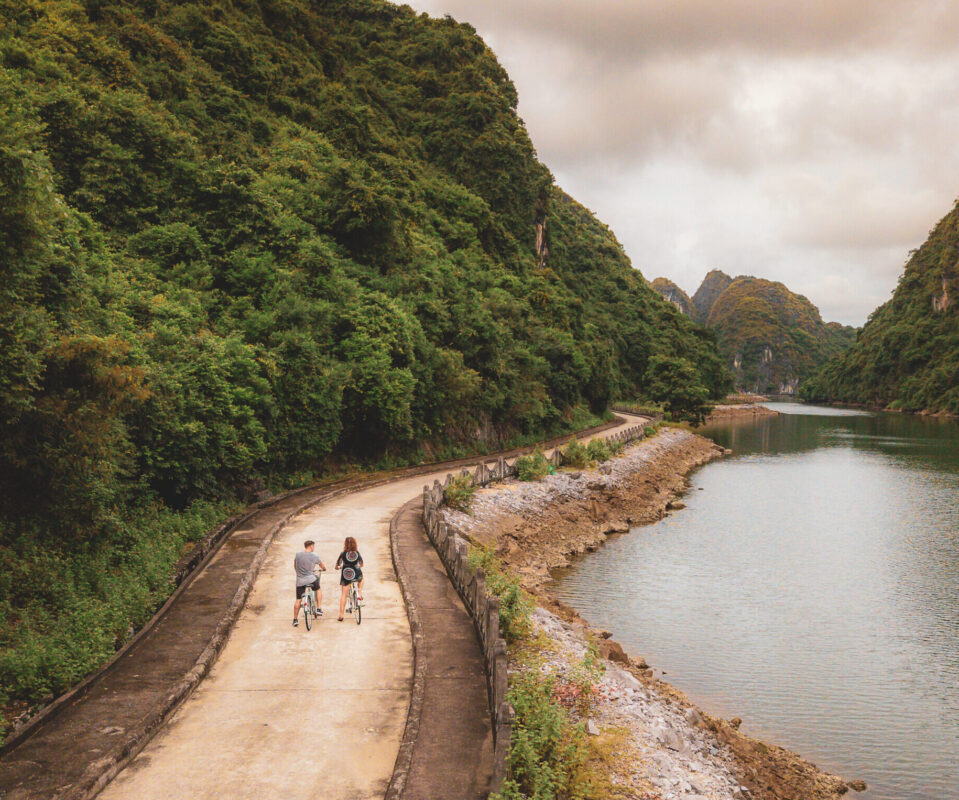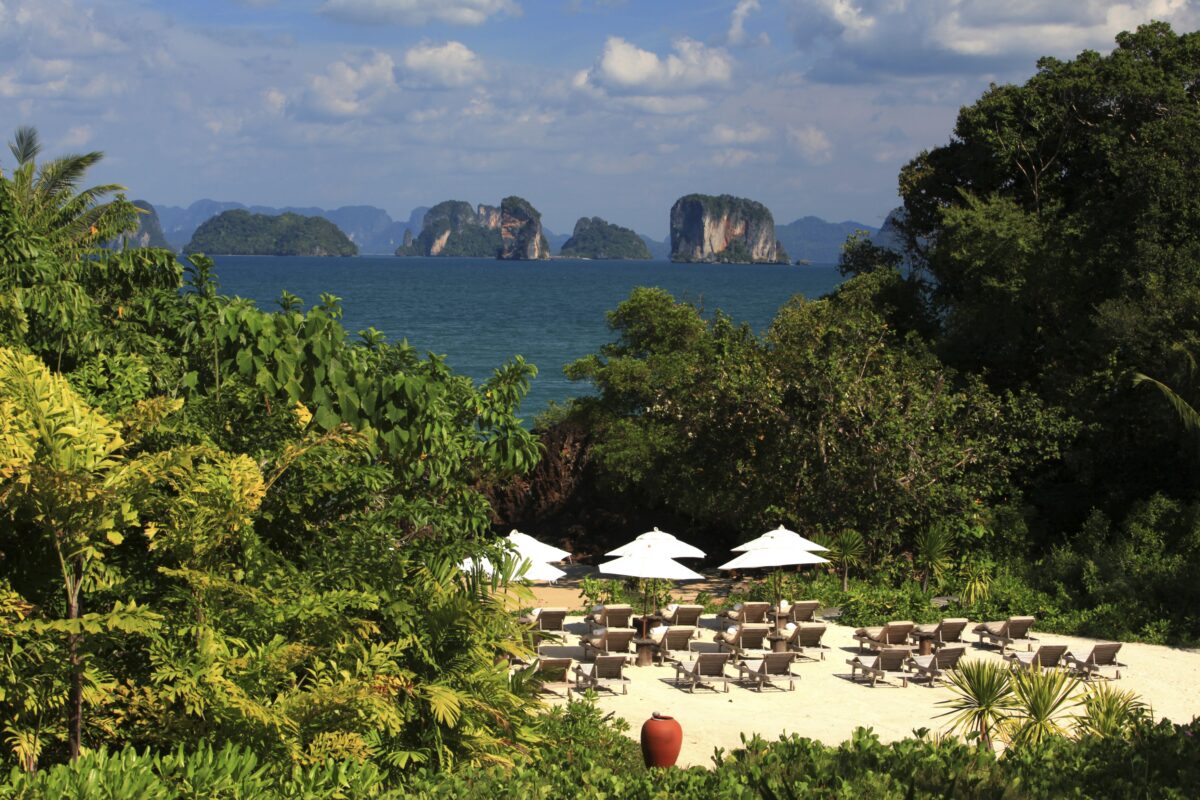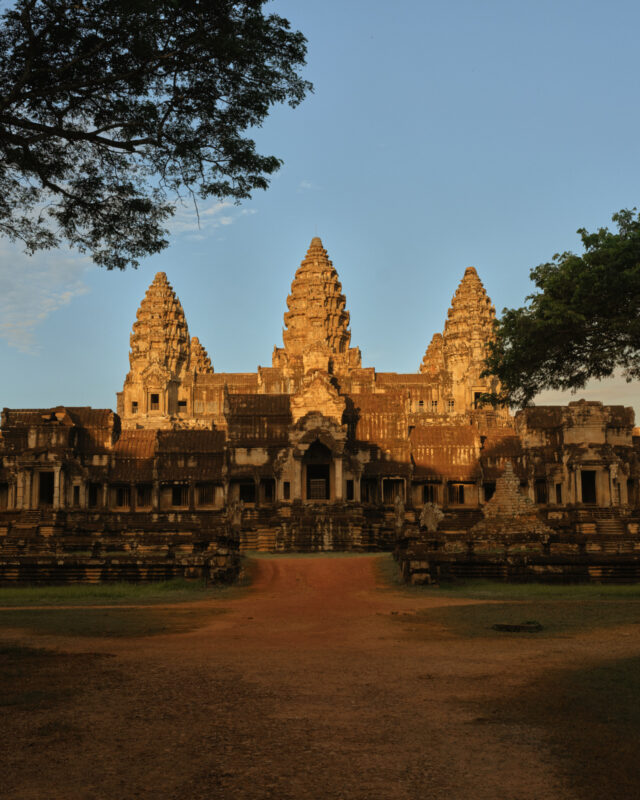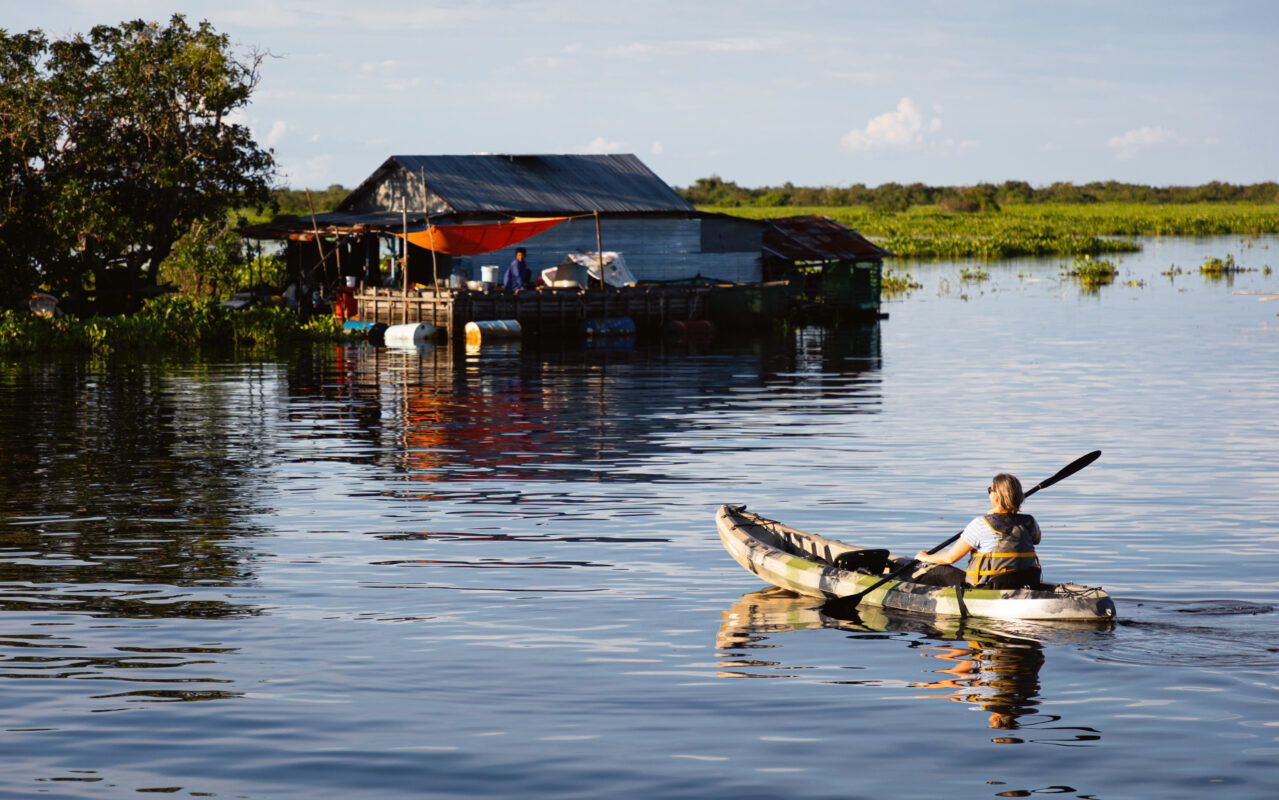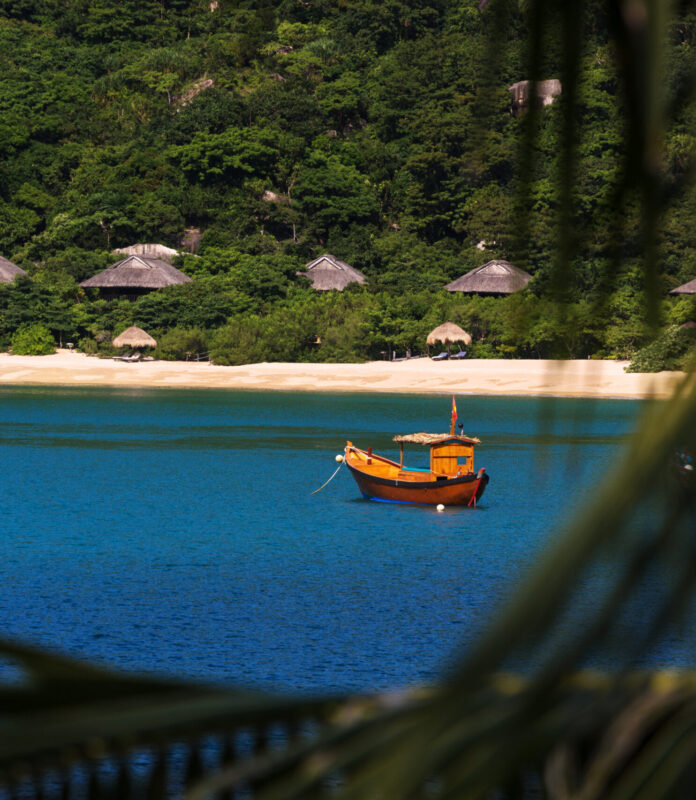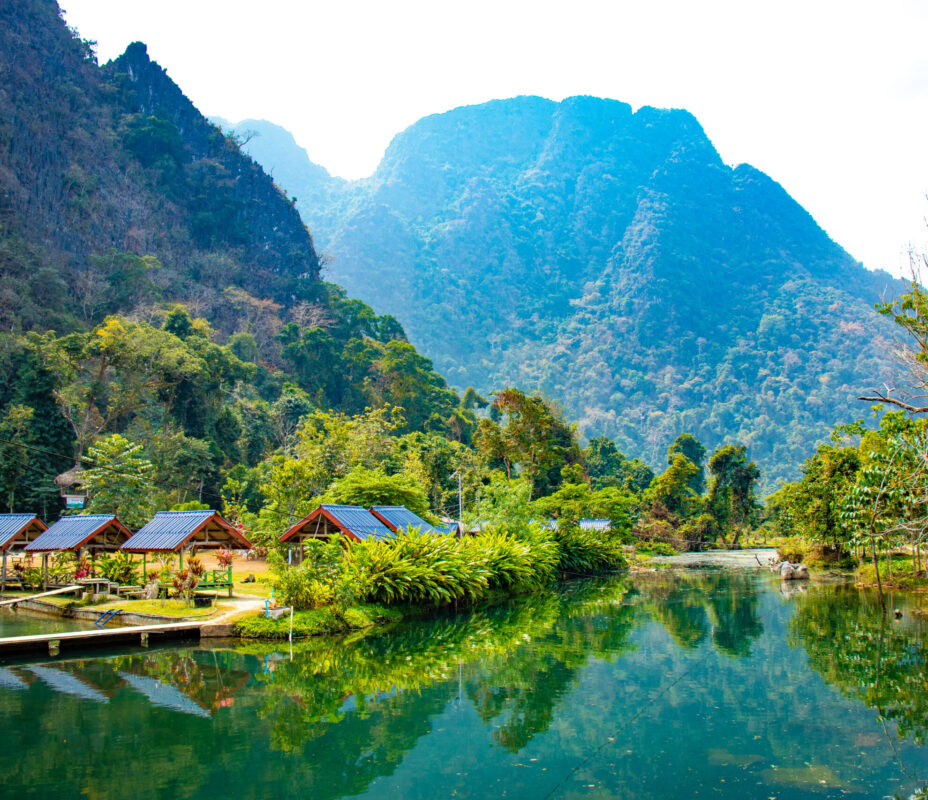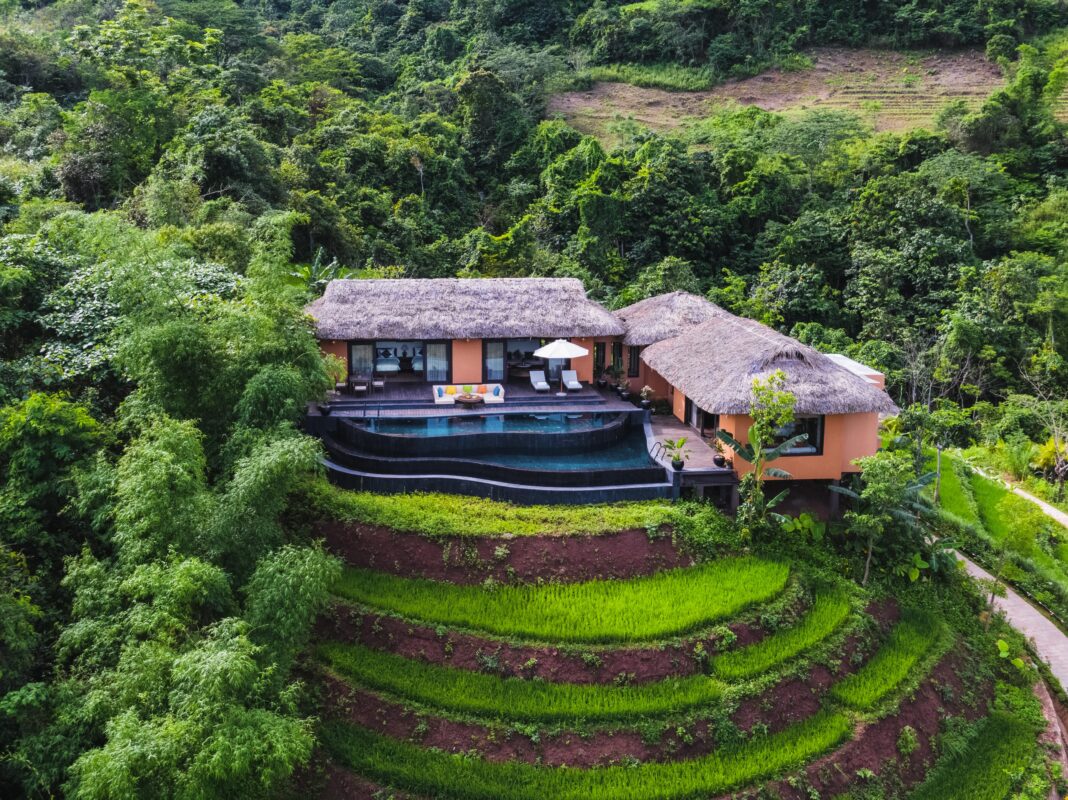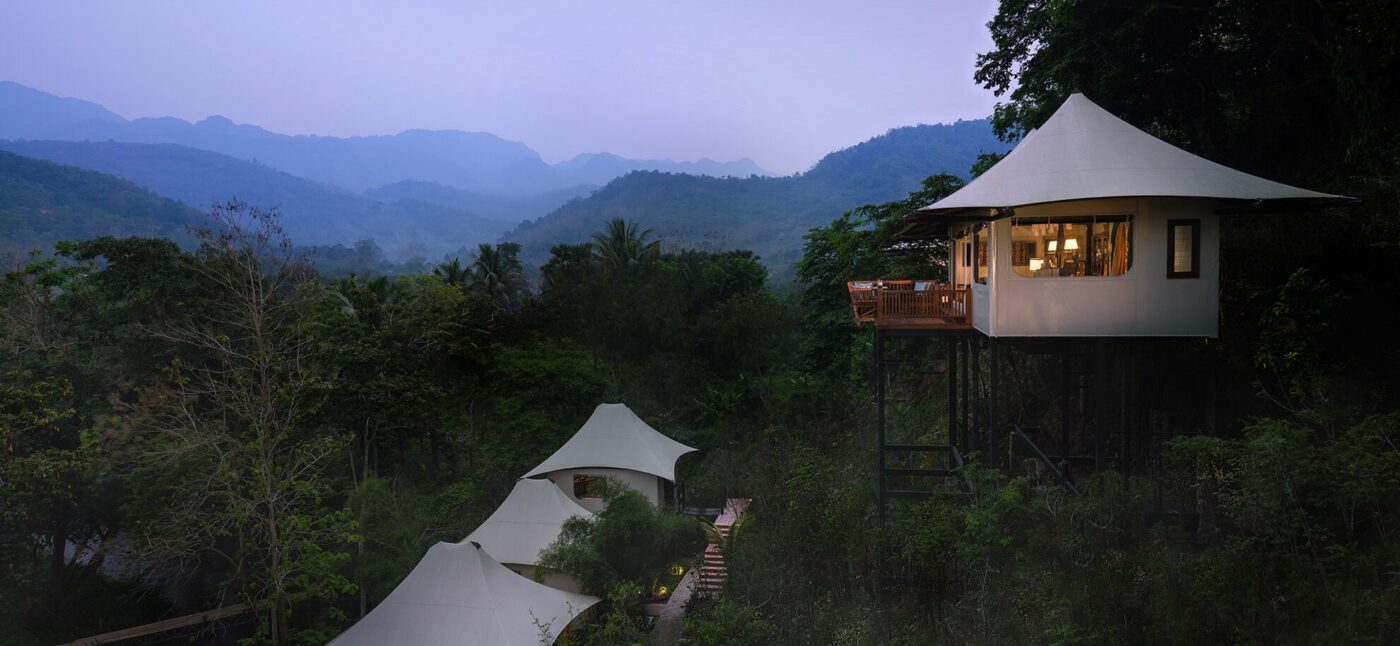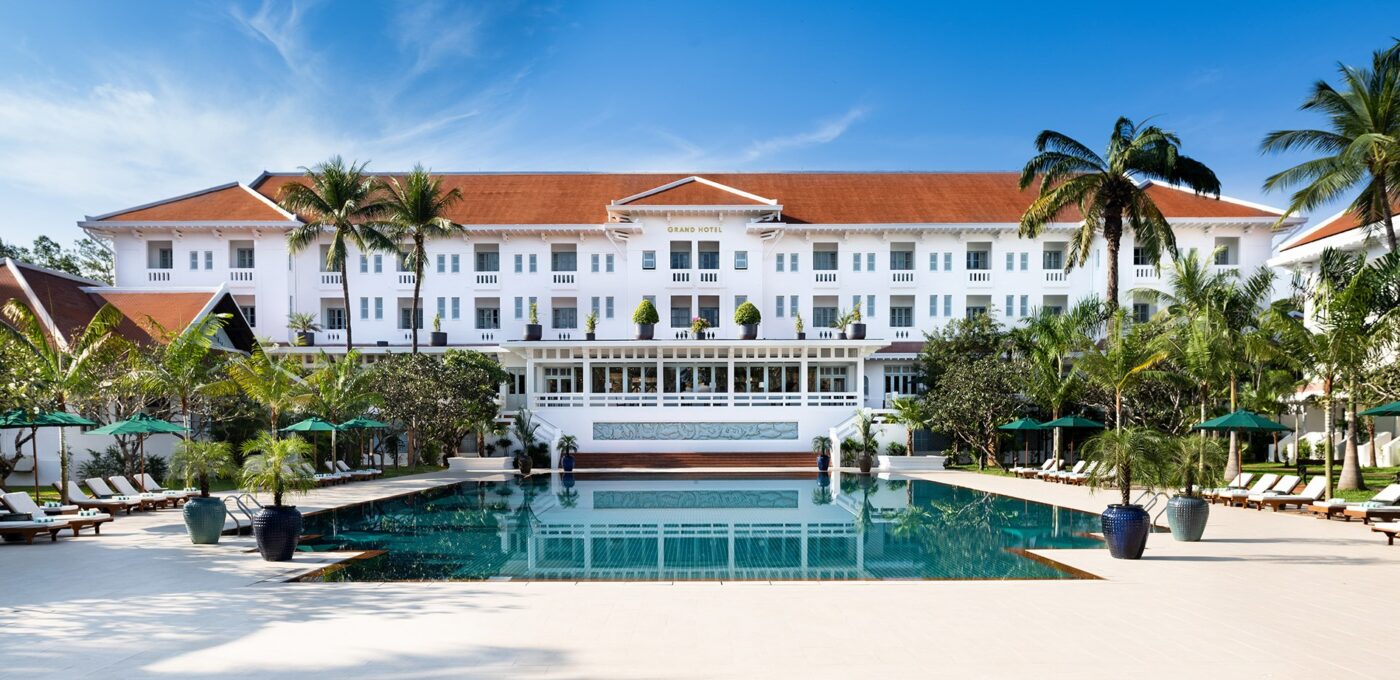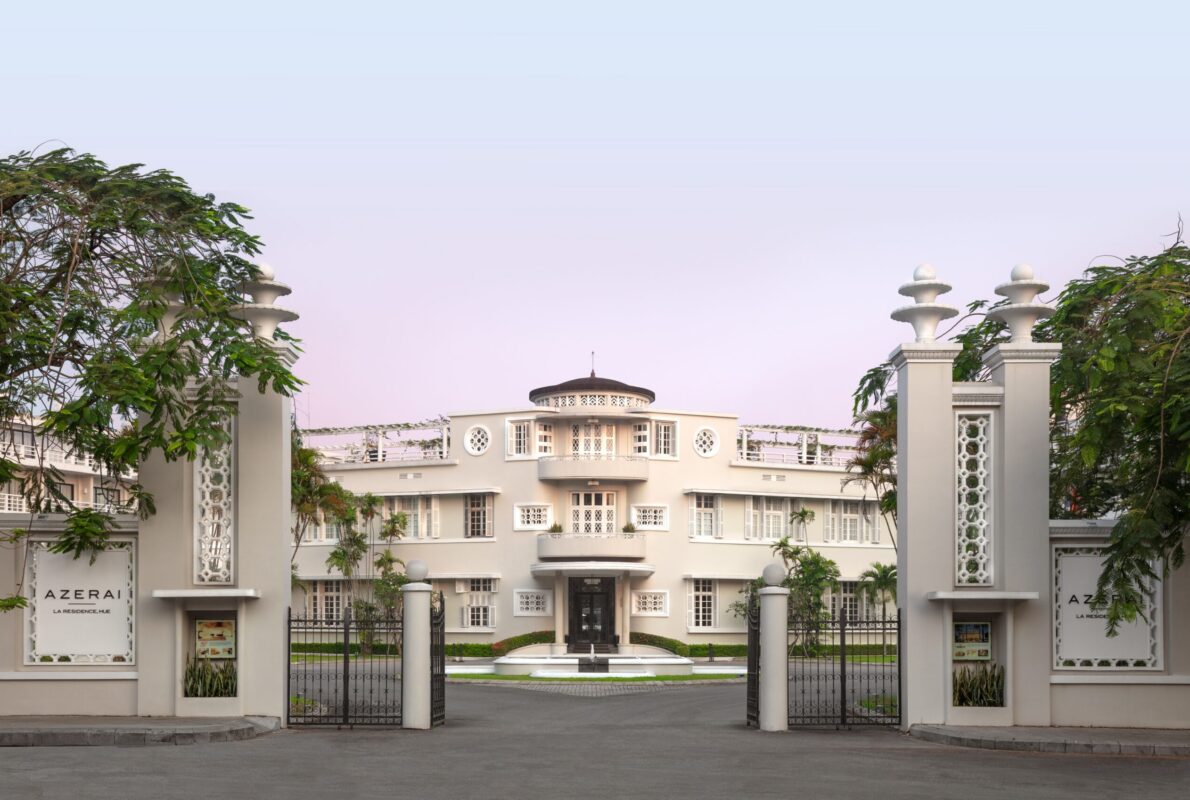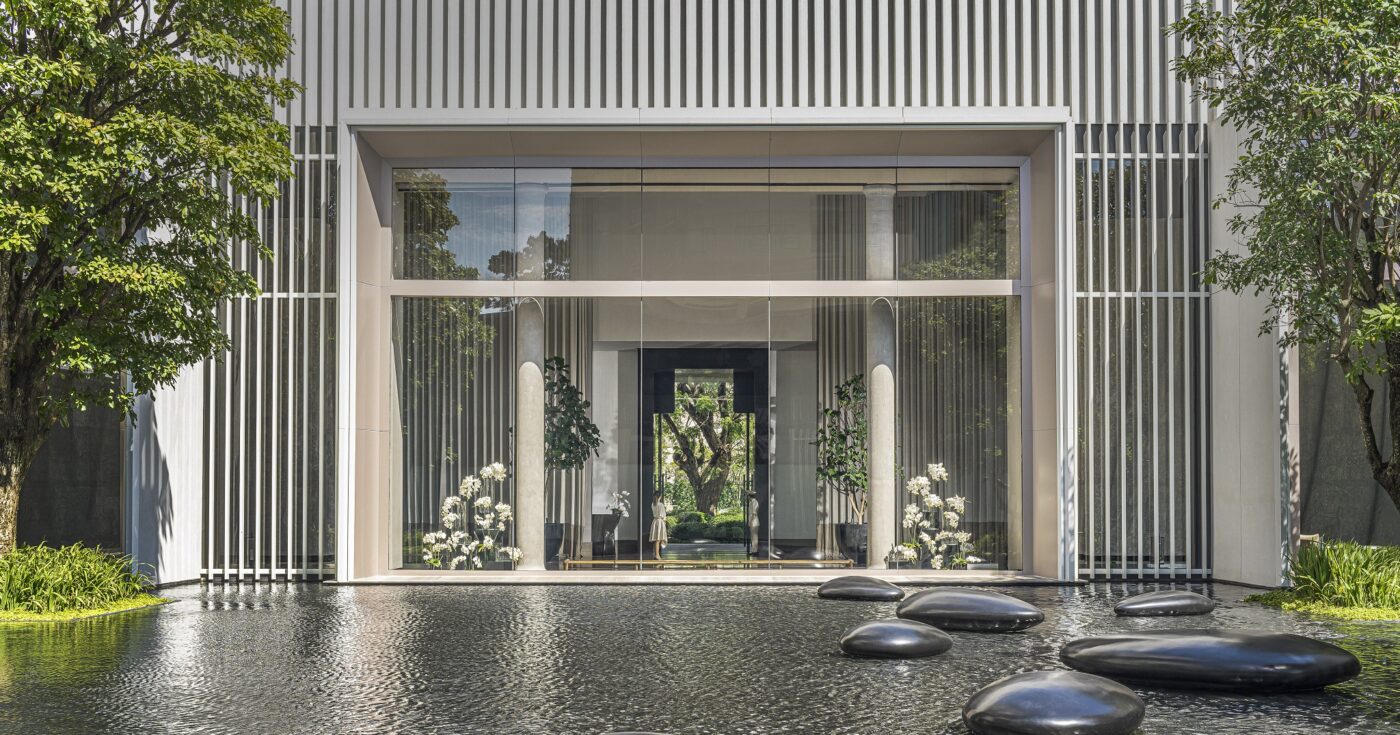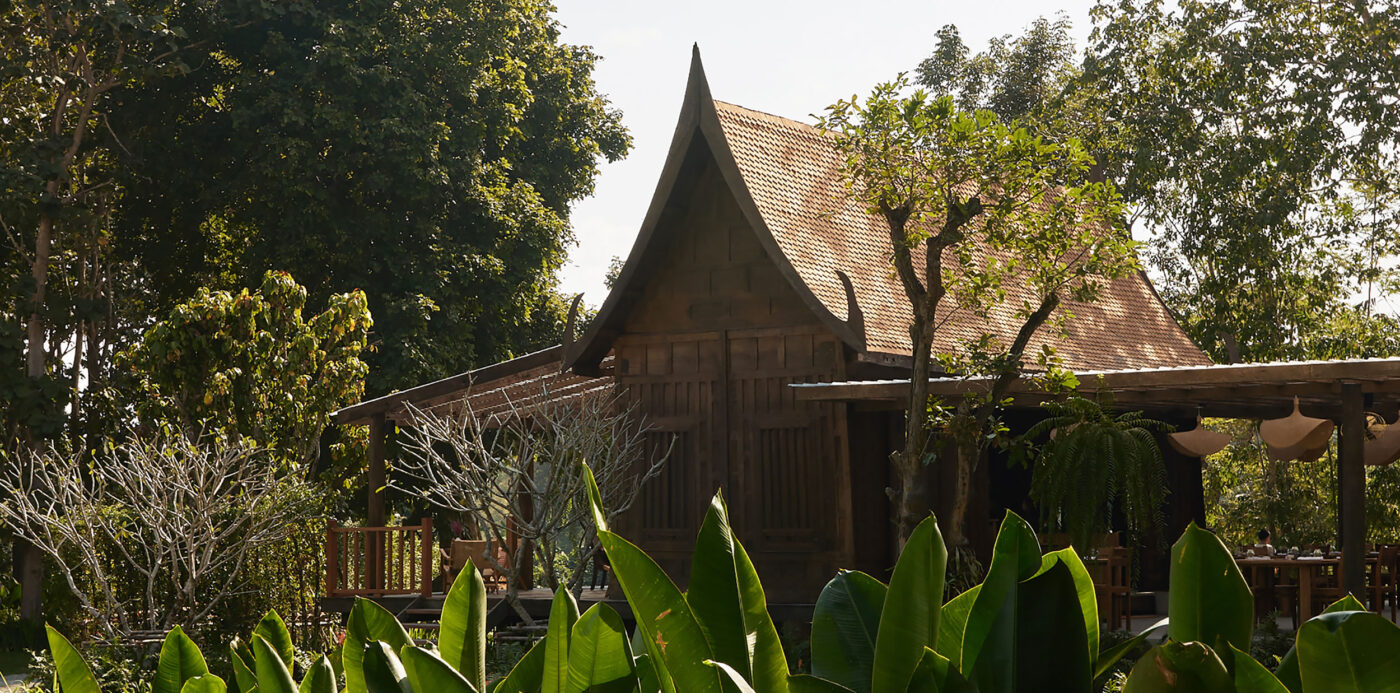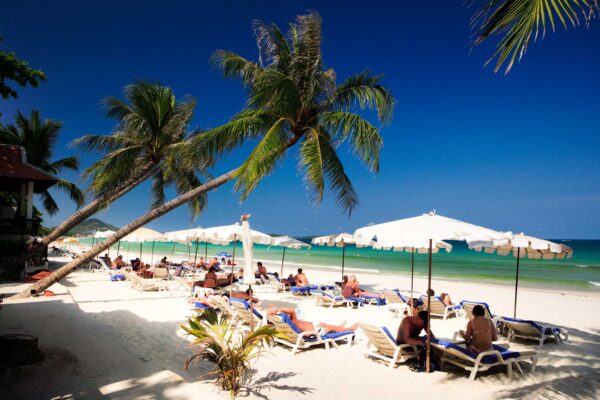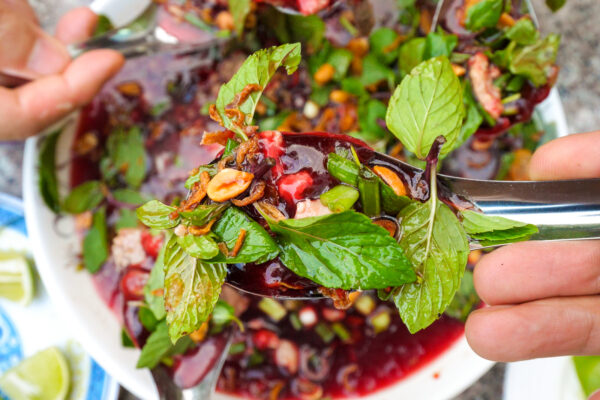LUANG PRABANG OVERVIEW
Located: Northern Laos
Total area: 16,8755 square kilometers.
Population: 451,889 (2024)
12 Districts: Luang Prabang, Xieng Ngeun, Nan, Pak Ou, Nambak, Ngoi, Pakxeng, Phonxay, Chomphet, Viengkham , Phounkhone and Phonthong.
Capital of the province: Luang Prabang
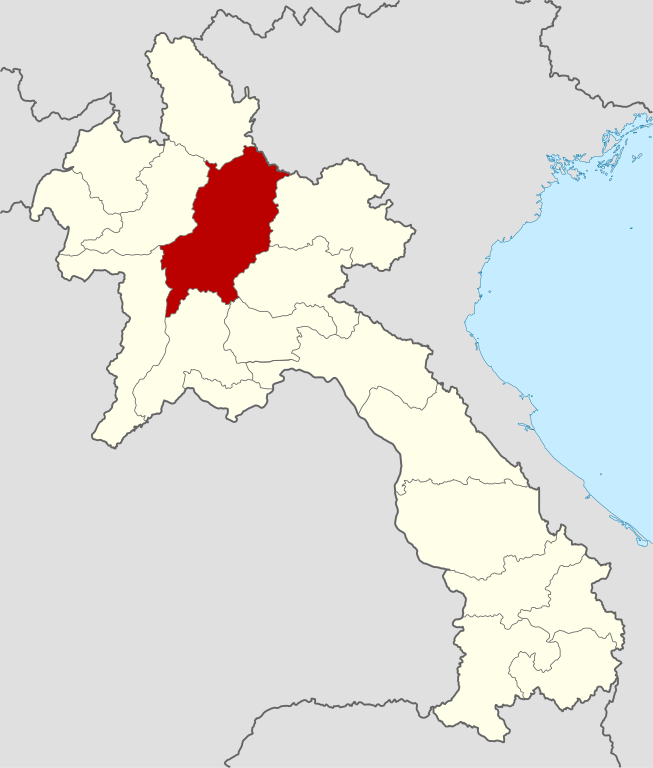
- UNESCO World Heritage Site
- Laos’ spiritual and religious centre
- Well preserved buildings
- Festivals
Situated in the centre of northern Laos, Luang Prabang is classified as a UNESCO World Heritage Site for its outstanding cultural, historic and architectural values and its harmonious relationship between the natural and built environment. In the 14th century, the King Fa Ngum founded the first Lao Kingdom, Lane Xang, here in Luang Prabang. Luang Prabang remained the capital of Lane Xang until 1565 when the capital was moved to Vientiane. It remained to serve as the country’s spiritual and religious centre.
Visitors to Luang Prabang are charmed by the friendly atmosphere of this small town. The town itself offers several unique insights into the history of the region, through excellently preserved Buddhist temples, museum and a variety of Lao, Tai-Lue, Burmese, Chinese and Taui architecture.
The town is famous for its unique textiles and beautiful mulberry paper. Famous foods in Luang Prabang are “Aur Lam” (a thick stew made with the herb “Sakhan”, meat and eggplants), “Jaew Bong”, a sauce made with hot chillies and buffalo skin and “khai Pan” dried river weed lightly fried with sesame seeds and garlic.
Some of the most visited sites in Luang Prabang Town are Wat Xieng Thong, Mount Phou Si, Wat Visounnarath, the former Royal Palace and Wat Manolom. Equally beautiful are the lesser known temples across the Mekong River in Chomphet District. You can take a 1,5 hour walk through the hills and forest opposite the main town to explore the old temple sites and peaceful environment. Just outside of the main town are the beautiful Tad Kwang Si Waterfall, Tham Ting Caves, Ban Xang Hai Village and the tiered waterfall Tad Sae. Further out is muang Ngoi Kao, a quiet village located on the banks of the Nam Ou River surrounded by high karst mountains and sheer limestone cliffs. You can visit these sites on your own or use the services of one of the many tour operators based in town.
Luang Parbang celebrates all of the major Lao Festivals in style. The largest, Pi Mai Lao or Lao New Year takes place officially from 13-15 April, but in Luang Prabang the festival often lasts a full week with a trade fair, “Miss Lao New Year” contest, parades and religious ceremonies. In late December is Hmong New Year. This is a time where the Hmong show off their finest traditional clothing, hold musical performances and other cultural ceremonies. In Luang Prabang, the annual boat races are held in late September, one month earlier than Vientiane and most other places in the country.
While in Luang Prabang, you may observe the morning alms giving ceremony where monks walk through town in single file carrying their alms bowls to give laypeople the opportunity to offer alms and gain merit. Offerings by the people are usually comprised of sticky rice, fruit or simple traditional snacks. Known as “Binthabat” in Lao, this is a sacred religious ceremony. Tourists may participate in and photograph the ceremony, however, the people of Luang Prabang, especially the monks, ask that this is done in a respectful way and visitors do everything they can not to disrupt this ancient tradition.
Archaeological evidence suggests that Luang Prabang has been inhabited since at least 8,000 BC. The first Laos Kingdom, Lane Xang, was founded here in the 14th century by King Fa Ngum after he conquered and unified the lands of modern-day Xieng Khouang , the Khorat Plateau and Luang Prabang. The city’s first contact with western emissaries occurred in the mid 17th century during the reign of King Surigna Vongsa. After his death in 1694, Lane Xang broke up into three separate Kingdoms; Vientiane, Champasack and Luang Prabang.
By the late 19th century Luang Prabang was under attack by marauding Black Flag bandits who destroyed many sacred Buddha images, temples and historical documents. Under King Sisavang Vong (1904-1959) a number of restoration and beautification projects were launched, many of which are still evident today. French influenced buildings began to appear in the later 1800’s, adding to the mixture of Lao, Tai-Lue, Burmese, Chinese and Tai architecture.
Luang Prabang is rich in cultural heritage, and is known as the seat of Lao culture, with monasteries, monuments traditional costumes and surrounded by many types of nature’s beauty.


TOURIST DESTINATION
XIENGTHONG TEMPLE (Wat Xieng Thong)
Built during the 16th century by King Saya Setthathirath and completed in 1560, Xieng Thong Temple is one of the most interesting examples of traditional Lao art and Buddhist architecture. The ornate carved and gilded funeral vehicle of the former king is kept in one of the buildings in the temple grounds. It is well worth visiting and paying your respects to this temple while in Luang Prabang. This temple was used to organize the highest Royal Ceremonies and houses the bones of King Sisavangvong. The intricate golden facades, colorful murals, glass mosaics and unique threetiered roof make this one of the most beautiful temples in Asia. Located on the main street at the end of the peninsular, when you walk from the Luang Prabang Tourism Information Center just about 10 minutes and at the left hand side. Open daily 08:00am – 17:00pm, Admission Fee: 30.000kip/person
THAT CHOMSI – PHOUSI MOUNTAIN
Incredible Mountain it’s located in centre of town visitors will need to climb 328 zigzag stairs up to the top of the Mountain from there you will see a perfect 360 panoramic view of the whole city. Mount Phousi is Luang Prabang Holy Mountain, and at its very top sites the 20 m high Wat Chomsi stupa. Located in the center of Luang Prabang’s old town with the Mekong River on one side, and Nam Khan River on the other.
CARUSO CREATIONS LUANG PRABANG
An international icon of Lao design for almost three decades, Caruso is the very essence of creativity. From marvelous ebony objects, often edged with pure silver, to the finest silk, you’ll find the country’s finest craftsmanship in this elegant boutique. Each piece has been reinterpreted with a modern touch using traditional forms. It’s impossible to leave the boutique without falling in love with an object. The master craftsmen’s workshop is open to the public. Daily worldwide shipments.
Address: 60 Sakkarine Road, Ban Vat Sene, Luang Prabang
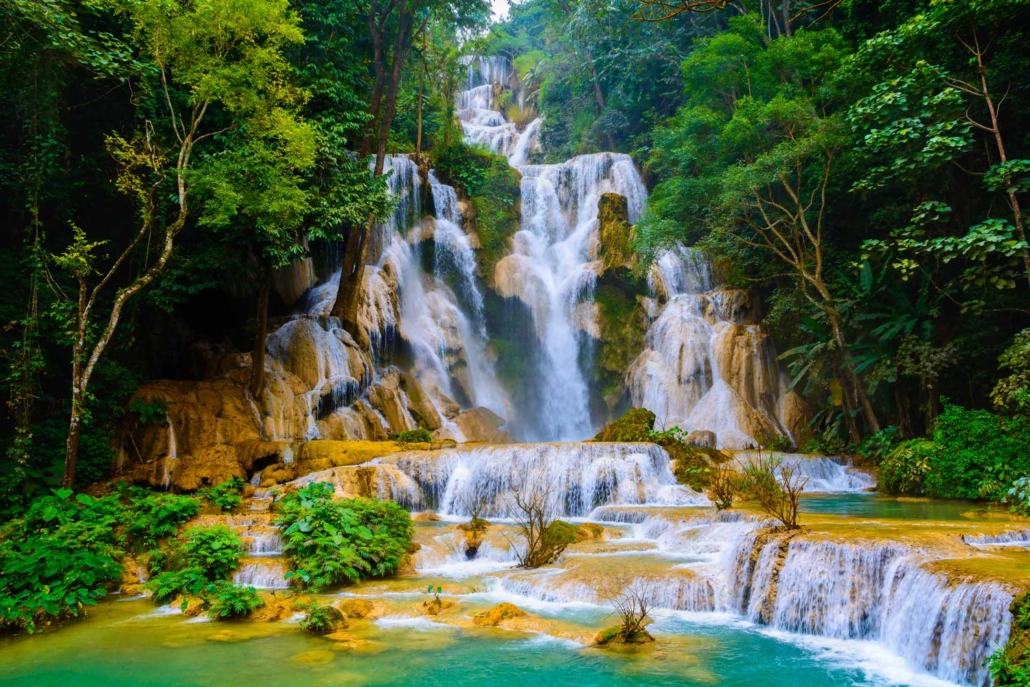
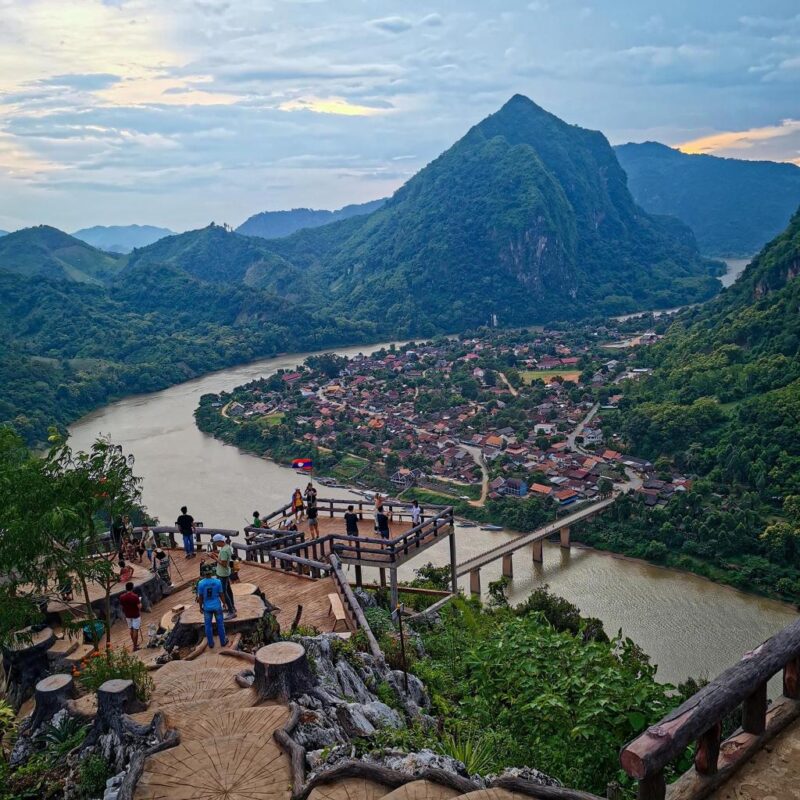
Located in the heart of Luang Prabang, the Royal Palace Museum was first constructed in 1904 in the French colonial era. Visit the museum and see the real “Prabang” Buddha image. Pha Bang lives is an easy-to-miss little room surrounded by engraved elephant tusks and three silk screens embroidered by the former queen. To find it, walk east along the palace’s exterior south terrace and peep in between the bars at the eastern end. Note that persistent rumours claims that the image on display here is stored in a vault in Vientiane. The ‘real’ one supposedly has gold leaf over the eyes and a hole drilled through one ankle. Open daily except Tuesday, Time: 08:00am-11:30am, 01:30pm-04:00pm, Entrance Fee: 30,000 Kip, Children under 10 free of charge.
LUANG PRABANG NIGHT MARKET
Luang Prabang night market (night bazar) is something you simply can’t miss when visiting this UNESCO world heritage city. The market is open daily from 5:00pm to about 10:00pm. It is located along Sisavangvong Road from the Royal Palace Museum. The market is open daily from 5pm to about 10pm.
TAD KUANG SI WATERFALL
In the dry season the water at Kuang Si (pictured here) takes on a bluish hue, owing to the presence of minerals like copper. In the wet season the water is a deep green and you can hear the sound of the falls well before you can see them. Look for signs indicating pools for swimming; nearby, you’ll find changing rooms. Please take care to observe local customs (and posted rules). You can also visit the Bear Rescue Center in the Kuang Si Waterfall (No entrance ticket) Tuk tuks and vans for sharing is about 60.000 kip/person and private is about 250.000 kip/group, regularly make the 30km trip to the falls; more adventurous (and fit) visitors may want to cycle there (there are a couple of steep hills end route). For cycling takes about 2 hours and renting a bicycle is about 20.000 kip/day. When cooling off at the pool or the falls, it’s also important to remember that bikinis and other very revealing swimwear are also frowned upon and public displays of affection, from hand-holding to more intimate gestures like kissing, are considered crude. Please also note that visitors are expressly requested not to walk around with shirts off or in just bikini tops. This is considered rude (and the individual in question is assumed to have questionable morals and status). Open daily 08:00am – 17:30pm, Tickets: 20.000k/person (under age of 12 years old free entrance).
ELEPHANT CAMP
Become a mahout for the day, bathe with an elephant, or ride one of these beautiful beasts through the jungle. There are many elephants camps, with different ethical approaches, to visit in Luang Prabang. But the country is home today to fewer than 1000 Asian elephants, and many traditional mahout families, once dependent upon the timber industry, can no longer afford to feed or care for the animals. Elephant Sanctuaries and Centres provide veterinary care and a way for mahouts to earn money for their families and keep elephants alive and healthy. Many of the centres offer opportunities for you can bathe, watch, feed or ride these majestic animals; along the way, you’ll witness the intimate and incredible relationship between mahouts and elephants. There are many, many opportunities to experience Asian elephants during a visit to Luang Prabang. To learn more, check out the Tour Operators (mostly located on the main street).
TAD SAE WATERFALL
These falls feature smaller cascades on a wider tributary. The area around the falls is more built-up than Kuang Si, and there are decks criss-crossing the water where you can relax and enjoy the sights and sounds. Nearby, an elephant park offers visitors the chance to meet, feed, and even ride Asian elephants. Tad Sae requires a ride out of town and then a short trip down the Nam Khan river in a traditional longboat. Tuk-tuks regularly make the 14km trip to the boat launch area and cotinue to take the boat to the main waterfall about 8 minutes. And also you can go by bicycle takes around 45 minutes. Tad Sae can be dry or mostly dry from February to July, so be sure to check before you go. (Tuk-Tuk cost about 150.000 kip and you can share with others for cheaper cost). When cooling off at the pool or the falls, it’s also important to remember that bikinis and other very revealing swimwear are also frowned upon and public displays of affection, from hand-holding to more intimate gestures like kissing, are considered crude. Please also note that visitors are expressly requested not to walk around with shirts off or in just bikini tops. This is considered rude (and the individual in question is assumed to have questionable morals and status). Open daily 08:00am – 17:00pm, Tickets: 30.000k/person (under age of 8 years old free entrance).
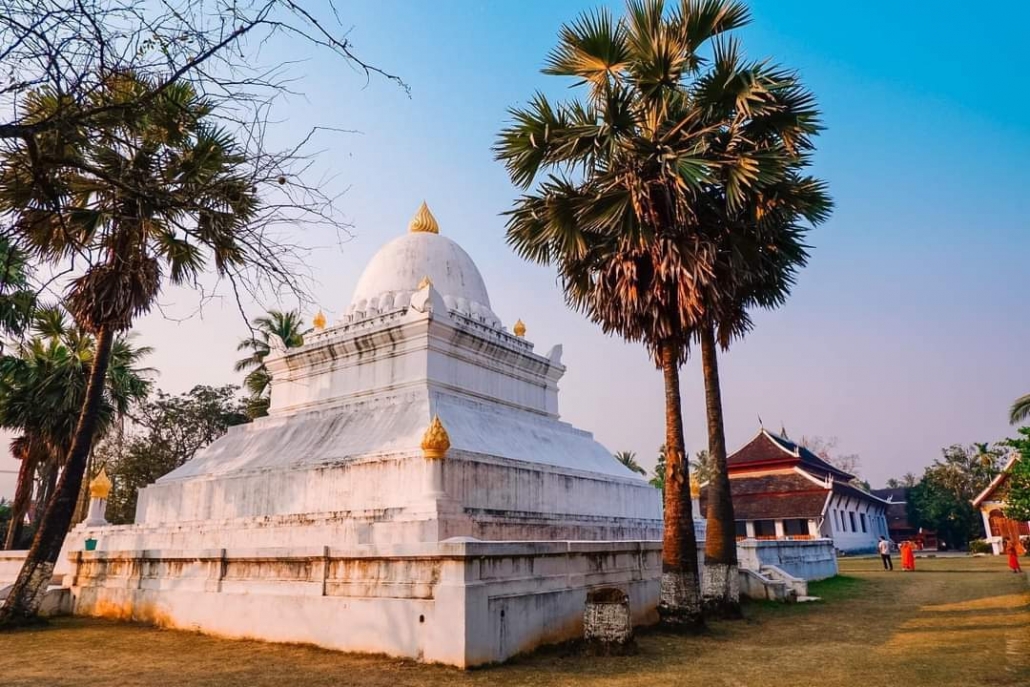

PHA TAD KE BOTANICAL GARDENS
Discover the incredible diverse flora of Laos and learn how local people have been using plants for medicine, food and wellbeing for centuries. The Pha Tad Ke Botanical Gardens is located on the opposite side of the Mekong River. They have a boat that departs hourly from town and takes 15 minutes to get to the gardens. There is plenty to explore – from the 280 species of ginger plants in the Ginger Garden, to the medicinal plants in the ethno-botanic section which is divided into areas such as ‘plants for women’s health’ and ‘plants for skin conditions’. There’s a lovely restaurant on site where you can grab some food and enjoy the greenery – as well as a pond full of water lilies. Extra workshops on horticulture are available to book. Free activities include orchid talks in the flower nursery and bamboo handicraft workshops. Open Daily from 09:00 to 17:30 (Closed on Wednsday) The entrance ticket they provide at the office which is include a round boat trips. The office is located in Wat That village, next to Luang Prabang Provincial Office down to Mekong river.
TRADITIONAL ARTS AND ETHNOLOGY CENTER
Visiting this professionally presented three-room museum is a must to learn about northern Laos’ various hill-tribe cultures, especially if planning a trek. There’s just enough to inform without overloading a beginner. If you want more information, watch the video or ask to leaf through the books of a small library cabinet in the museum’s delightful café. TAEC is within a former French judge’s mansion that was among the city’s most opulent buildings of the 1920s. Open daily except Monday, Time: 09:00am-06:00pm Admission: 30,000 kip, Tel: +856-71-253364. www.teaclaos.org
SLOW BOAT & RIVER CRUISE
The waters of the Mekong have for centuries been the major highways in this region, carrying goods, people and ideas up through the heart of Laos. Even today, boat traffic is a busy part of the Mekong. If you like, charter a boat and have your own trip, stopping and looking at what takes your fancy. You can dine on the river or just laze with your camera at the ready. Many popular spots are accessible by boat (some, like a Tad Sae Waterfall and Tham Ting Cave are only accessible by boat). Consider, too, simply hiring a boat to cross the Mekong to visit Chomphet district for a great perspective on the city from across the river. Or take a spectacular sunset cruise to relax and take in the natural beauty.
KUANG SI BUTTERFLY PARK
Situated 300m before the entry of Kuang Si Waterfall. Kuang Si Butterfly Park is a project that was initiated in January 2014 from 2 Dutch passionate people from Holland. The mission is to create a research centre studying and publishing about Laos butterflies, host plants and preservation because of environmental issues in Laos. The center is looking for entomologists and botanists to help and develop the center. The Butterfly Park is open for schools to raise awareness about the beautiful and vulnerable nature in Laos, will provide them with learning materials to educate and understand the importance to preserve their beautiful nature for their health, happiness and financial security in the future. The Butterfly Park wants to create funding as well for local schools. So those children can come to learn about their local nature. Although the center is still in its (promising) beginning, it still has a lot to do, according to two Dutch who initiate the project. A nice little café on the pound can finish the visit, for having a good coffee, delicious baguette in a beautiful surrounding. Open daily 10:30am – 16:30pm (Close on Teusday), Tuk tuks and vans for sharing is about 50.000 to 60.000 kip and private is about 250.000 kip, regularly make the 30km trip to the Kuang Si Butterfly Prak (You can go the same car to the waterfall); more adventurous (and fit) visitors may want to cycle there (there are a couple of steep hills en route). For cycling takes about 2 hours and renting a bicycle is about 20.000 kip/day.
LUANG PRABANG GOLF CLUB
The golf course has a full range of equipment for hire, and you can always find someone willing to play or accompany you on your round. It is open 7 days a week and you have the luxury of playing a delightful course. The first 9 holes are gentle and good for beginners, the last 9 holes require more finesse. If you want to learn or just to get a quick game in, it is the perfect way to spend some time in a beautiful setting. From March through June, it’s best to go in the early morning, before it gets too hot. Only 7 kilometres from Luang Prabang town, just take the same way to Kuang Si Waterfall.
ALMS GIVING CEREMONY
The UNESCO World Heritage City of Luang Prabang is the perfect place to see one of the most sacred Lao traditions, the Buddhist Alms Giving Ceremony. Despite being a highly revered ritual for locals, visitors are encouraged to be involved as long as a level of respect is maintained throughout. Alms giving takes place daily as the sun rises, beginning on the main street of Luang Prabang before spreading out to all the side streets. You should buy your offerings (usually food) in advance and arrive with plenty of time to spare as it’s considered very offensive to disrupt the ceremony once it has commenced. Follow the guidance of the locals by kneeling down ready to give your offering to the monks; most common gifts include rice, fresh fruit and traditional sweet snacks. The idea of the alms giving is for the Buddhist monks to make merit and also to collect food for their one meal of a day.
LUXURY CAMP@GREEN JUNGLE PARK OPENS IN LUANG PRABANG
The Lao Green Group has opened Luxury Camp@Green Jungle Park to add an accommodation element to the 25-hectare natural adventure playground located about 15 km (45 minutes) from Luang Prabang Town. The 19-sqm twin and double luxury bungalows feature terraces presenting mountain or courtyard views, and all offer easy access to the swimming pool. The wheelchair accessible cabins present wood-trimmed interiors that host a modern bath, plush beds, picture windows, air conditioning, and standard amenities and toiletries. Guests also receive a complimentary continental breakfast……….
MEET LUANG PRABANG’S POTTERY MASTERS AT BAN CHAN
A look around Luang Prabang reveals loads ofclay lamps, pots, planters, jars, vases, ashtrays, animal figurines, charcoal barbecue grills, and other earthenware products. You’ll see them in hotels, homes, and peoples’ gardens wherever you look. Do you want to see who makes them and how? Do you want to take a pottery class and learn from the masters? Head to “Pottery Village”, about 4 km from the Chompet Pier across the Mekong from the UNESCO World Heritage City…………
NAHM DONG: ALL-IN-ONE SUSTAINABLE PARK IN LUANG PRABANG
Sustainability and ecotourism are the names of the game at Nahm Dong Park that presents 18 hectares of nature with loads of activities for all or just relaxation about 10 km from the center of Luang Prabang. Nahm Dong offers an activity menu for all ages and desires. For action in nature, visitors can tackle a zipline and treetop walking courses. Creative guests will find classes in making mulberry paper and Tai Leu dreamcatchers, Hmong embroidery, and traditional Lao cooking. Overnight guests can campout in tents or stay in a Lao house. The list also includes hiking and the Garden of Senses. There is something for everyone at Nahm Dong Park…………
HIKING & CAMPING AT THE BEST VIEWPOINT IN LAOS: PHA DAENG PEAK
Laos has planted its national flag atop Nong Khiaw’s Pha Daeng Peak, arguably the country’s #1 viewpoint. The summit is known for its morning “Sea Fog” and recent addition of tent camping about three hours north of Luang Prabang. A dawn hike to the top takes climbers above the clouds that cling to the mountains in the horizon. The rising sun burns off the mist to reveal a 360-degree panorama starring the Nam Ou River snaking around Nong Khiaw Town………….
